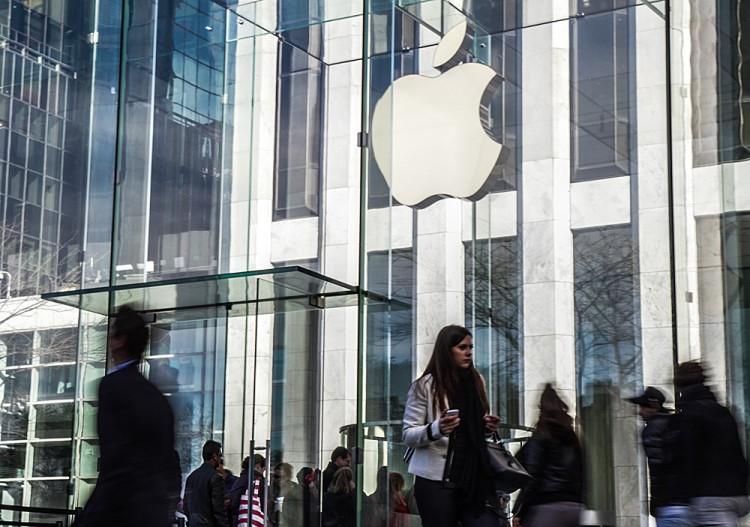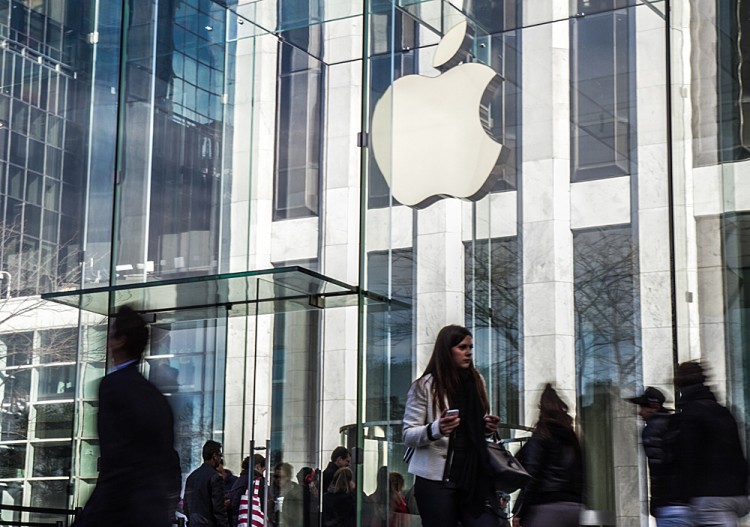There are few stock prices that can compare to Apple Inc. stock, which climbed to $601.10 per share at closing on March 19. On March 16, the closing price for Apple Inc. was $585.57, having opened in the morning at $584.72, traded at a low of $578, and hitting a high of $589.20, according to the Yahoo! Finance historical tables.
On March 19, the summary for Apple’s stock price indicates the day’s range rolled up and down between $589.05 and $601.77.
Apple Inc. “will become the most valuable company in the world. Bet on it. ... That was the intro to an article I wrote on Sept. 12, 2010, on the inevitability that Apple would become the most valuable company in the world,” said Eric Bleeker in a March 9 article on The Motley Fool website.
On Sept. 10, 2010, Apple’s closing price was $263.41, ebbing and flowing between a low of $261.40 and a high of $264.50. By March 15, 2011, Apple’s closing stock price increased by $322.15, a quite impressive increase of 122 percent.
Keeping the Interest Going
Apple “plans to initiate a quarterly dividend of $2.65 per share sometime in the fourth quarter of its fiscal 2012, which begins on July 1, 2012,” according to an Apple press release on March 19.
At the same time, Apple announced that it would repurchase $10 billion in outstanding shares, starting on Oct. 1. The share buy back and dividend will use about $45 billion of its cash located in the United States.
The above news was anticipated for quite some time, as the company has been sitting on a hoard of cash and short-term and long-term marketable securities. As of the Dec. 31, 2011, consolidated balance sheet, this amounted to $97.6 billion, up from $81.6 billion on Sept. 24 of the same year, according to Apple’s first quarterly Securities and Exchange Commission 10-Q filing.
“Apple Inc. (NASDAQ: AAPL) is another one that it is often criticized for not paying a dividend, but what right do any of us from the outside have to say that it is not doing the right thing?” asked an article on the 24/7 Wall St. website.
Apple hasn’t paid a cash dividend since it paid $0.12 per share on Dec. 15, 1995. The company paid its first cash dividend of $0.06 per share on June 15, 1987.
Many financial experts disagreed with Apple and other larger companies, which include Amazon.com Inc., Berkshire Hathaway Inc., and Google Inc., for their refusal to pay dividends, despite great earnings and an excellent cash position.
“With all of the uncertainty in today’s markets and in today’s economy, having a solid dividend policy may be the key to keeping nervous investors from fleeing and going into cash or other assets that actually pay no income at all,” the 24/7 article said.
Not all investors are interested in receiving dividends, given that a company that does not pay dividends retains its revenue and thus increases its shareholder equity. Such retention of cash may most likely increase the share value of the company.
“What many investors don’t grasp is the direct relationship between share prices and cash dividends. If a company’s stock is trading at $20 and it pays a $1 dividend, its share price (in theory, anyway) should fall to $19. ... There is always a trade-off. After all, when a company that pays out, say, $10 million in dividends, it must be worth $10 million less,” according to the Canadian Couch Potato website, an investment strategy website.
Many investors want to make money and for them, dividends are a great way to increase income, argues the article “Why Smart Investors Buy Dividend Stocks” on The Motley Fool website.
The Motley Fool article suggests that dividend payouts affect the performance of the stock, that is, if the stock outperforms or underperforms. The higher the dividends, the more likely the stock will outperform over time, suggesting that it is doing better than the market price.
More to the point, “high-dividend stocks have tended to do better than other shares in both bull and bear markets,” as well as “tend to outperform most other assets in periods of low or no economic growth—exactly where we are now,” according to a BlackRock Investment Institute March 2012 report.
Predicting Apple’s Future Performance
“Annual inflation of just 3% cuts the purchasing power of a $100,000 cash hoard in half over 25 years. … The impact of inflation shows putting money under the mattress [hoarding cash] is not a viable long-term strategy,” according to the BlackRock article.
With Apple letting go of some of its cash hoard, a prediction of continued impressive performance of Apple stock seems more realistic.
However, the author of a Motley Fool article asked himself if Apple would continue to be a rising star, and would people still buy the stock even if it reached beyond $600 per share, or as with so many other firms, would it just reach a point when it stops rising, preparing for a decline.
“Enough, already! Is Apple still a buy? Put it all together and yes, I still think Apple’s a buy,” the author of The Motley Fool article said.
The analysis suggests that Apple will continue to be a rising star, at least until 2013, as it is moving aggressively into emerging markets, including Brazil, Russia, India, and Indonesia.
While moving into emerging markets, Apple also is trying to promote its products with the information technology folks in developed markets, envisioning the iPhone, iPad, and Macintosh computer would be used company wide.
There is always that surprise move with Apple, and this time, to keep the market in its pocket, Apple just announced that it is diversifying and that there will be an Apple television set by 2013.
“Smartphones and tablet computers may already be in the hands of millions of Americans, but monumental growth still lies ahead. Morgan Stanley predicts smartphone sales will outpace PC and laptop sales in 2012. By 2013, an estimated 650 million smartphones will be sold. And over 1 billion smartphones will be sold annually by 2016, according to IMS Research,” a Motley Fool Stock Advisor special report states.
Extraordinary Profits Only for Apple
“Business partnerships with Apple Inc. (Nasdaq: AAPL) produce abundant profits—but usually only for Apple,” suggests the article “How Apple Inc. Became the Vampire Squid of Tech” on the Money Morning website.
The article implies that Apple, given its market position, procures agreements that undercut its business partners’ profitability.
Given its agreements with Apple, the profit margin for AT&T Inc. dropped to 15 percent in the fourth quarter of 2011, from 22.9 percent in the prior year. Verizon Communications Inc.’s profit dropped by an average of 4.2 percent per quarter during 2009 and 2010. Others, such as Sprint, are experiencing a significant drop in their profit margins.
Retailers, including Best Buy Co. Inc. and Radio Shack Corp., earn around $100 when selling an iPhone versus three times as much when selling the phones of Apple’s competitors.
Google Inc. isn’t impervious to Apple’s operational antics. Google keeps only about one-fourth of the profit on digital products, the Money Morning article suggests.
“Apple has, in effect, become the technology world’s ‘vampire squid’—a term coined by Rolling Stone [Magazine] Matt Taibbi in 2009 to describe Wall Street behemoth Goldman Sachs,” according to the Money Morning article.






